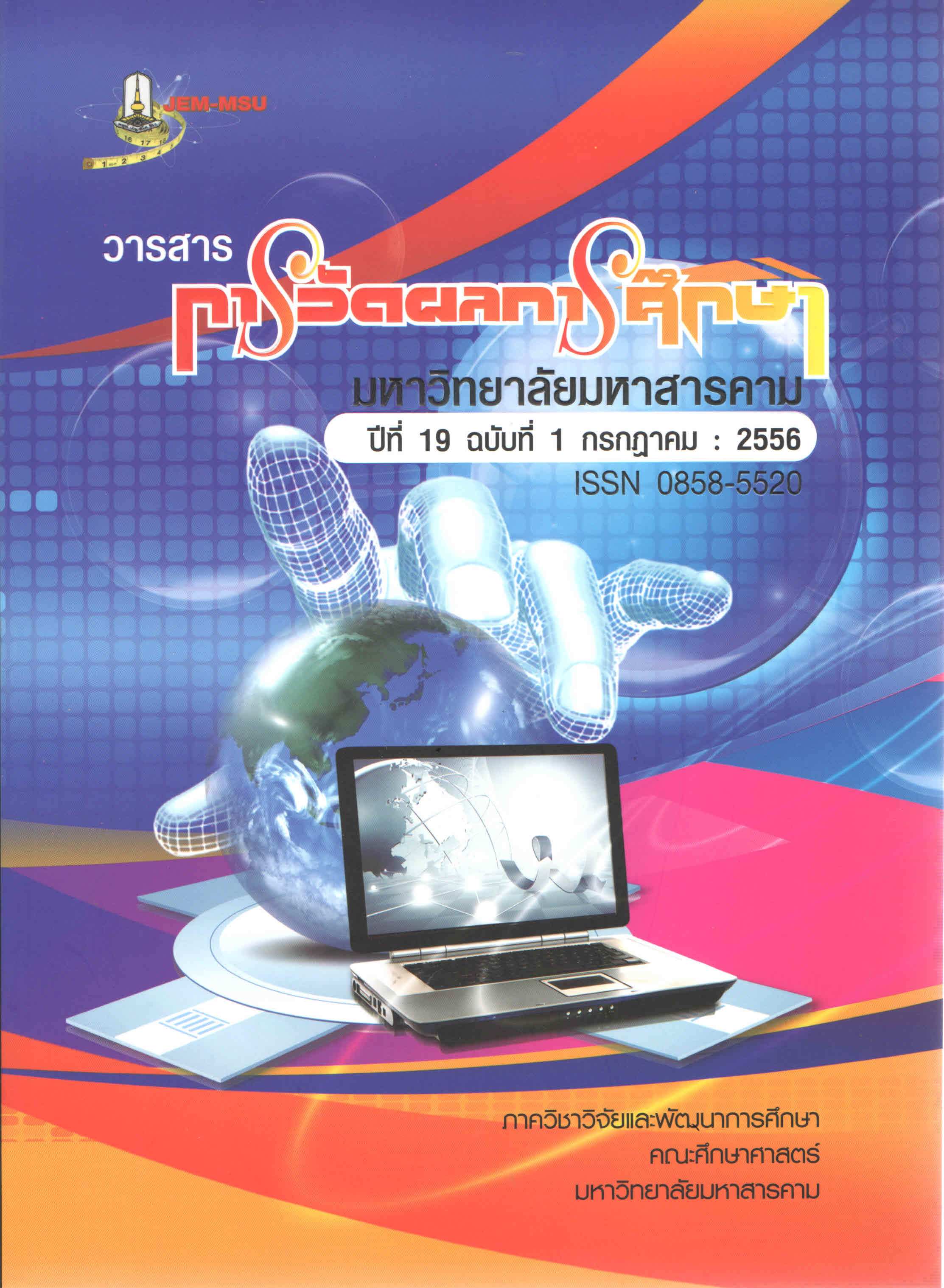Causal Factor Effecting the Critical Skill of Prathomsuksa 6 Student, subject to Primary Educational Service Area, Khon Kaen : Multilevel Analysis
Main Article Content
Abstract
This research aimed to: 1) study, using the multilevel analysis, the variables at the
student’s level that had an effect on the critical skill 2) study, using the multilevel analysis, the
class room’s variables that had an effect on the critical skill 3) create and evaluate the validity of
the casual factor model that had an effect on the critical skill of Prathomsuksa 6 student, subject
to Primary Educational Service Area 2, Khon Kaen. Multilevel Analysis.
According to the multilevel analysis, the sample group was selected by Multi-Stage
Sampling. Research instruments included: 1) Critical Skill Test with .31 to .80 of difficulty index, .24
to .68 of discrimination, and .83 of reliability; 2) Learning Proficiency Test with .27 to .73 of
difficulty index, .24 -.60 of discrimination, and .82 of reliability; 3) Rational Skill Test with .40 to .70
of difficulty index, .28 to .79 of discrimination, and .82 of reliability; 4) Learning Attitude Test; 5)
Self-Efficacy Test; 6) Parental Learning Support Test; 7) Personal Behavior Test; Critical Skill Support
in Class room; and 8) Instructor’s Teaching Quality Test. The last five instruments individually had
a discrimination as follow - .27 to .73, .31 to .79, .49 to .77, .35 to 68, and .37 to .74 respectively.
Besides, these instruments individually contained a total reliability as follows -.846, .883, .902, .822,
and .893, respectively. Data analysis was conducted by applying Descriptive Statistics, Multiple
Correlation Analysis, Confirmatory Factor Analysis (CFA), Multilevel Confirmatory Factor Analysis
(mCFA) and an analysis of Multilevel Structural Equation Model (MSEM). The research conclusion
notably suggested that:
1. At either individual student’s level or within group, it was found that the learning
proficiency, learning attitude, and relational skill directly had an effect on the student’s critical
skill with a statistical significance of .01 and effect size of .229, .172, and .322, respectively.
Learning attitude indirectly had an effect on the student’s critical skill, through the learning
proficiency and rational skill, with a significance of .01 and effect sizes of .382 and .345,
respectively. Learning proficiency indirectly had an effect on the student’s critical skill, through
the rational skill, with a significance of .01 and effect size of .621. Indeed, all variables significantly
had a forecasting power. That is, learning proficiency, learning attitude, rational skill, self-efficacy,
and parental learning support identically forecasted the student’s critical skill for 76.4%.
2. At either classroom level or between groups, it was found that critical skill support
in class room and the instructor’s teaching quality directly had an effect on the in-class critical
skill with a significance of .01 and effect size of .272 and .109, respectively. Indeed, all the
variables had a forecasting power. That is, critical thinking support in classroom and instructor’s
teaching quality identically forecasted the in-class critical skill for 55.0.
3. The multilevel confirmatory factor analysis of the factor with an effect on the
student’s critical skill finely matched the empirical data after evaluating the statistical data used
to verify the model’s validity. The data were shown as follows - 2 = 1191.857, df = 552, CFI =
0.949, TLI = 0.940, RMSEA = 0.040, SRMRw = 0.017, SRMRB = 0.040 when 2 /df = 2.159.
In conclusion, the research outcome notably indicated that learning proficiency, learning
attitude, and rational skill had an effect on the student’s individual critical skill. Critical skill support
in classroom and instructor’s teaching quality had an effect on the in-class critical skill. As a result,
the educational executives, instructors, parents, and stakeholders are required to support and
develop the abovementioned factors so that they would equip the student with higher critical skill
Article Details
The content and information contained in the published article in the Journal of Educational Measurement Mahasarakham University represent the opinions and responsibilities of the authors directly. The editorial board of the journal is not necessarily in agreement with or responsible for any of the content.
The articles, data, content, images, etc. that have been published in the Journal of Educational Measurement Mahasarakham University are copyrighted by the journal. If any individual or organization wishes to reproduce or perform any actions involving the entirety or any part of the content, they must obtain written permission from the Journal of Educational Measurement Mahasarakham University.

